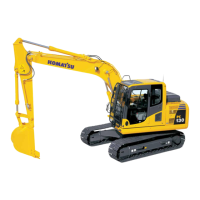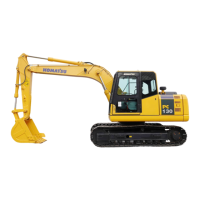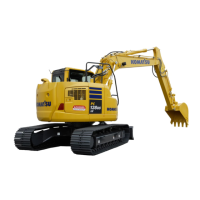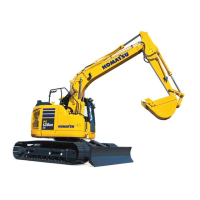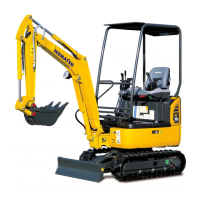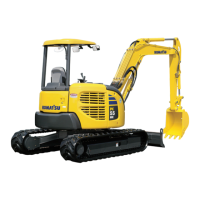1-9
PC130/150LGP-6K ENG
7. PRECAUTIONS DURING
OPERATION
WARNING: Failure to follow
these safety precautions may
lead to a serious accident.
7.1 BEFORE STARTING ENGINE
SAFETY AT WORKSITE
• Before starting operations, thoroughly ckeck the area for any unusual conditions that could be dangerous.
• Check the terrain and condition of the ground at the worksite, and determine the best and safest method of
operation.
• Make the ground surface as hard and horizontal as possible before carrying out operations.
If the jobsite is dusty, spray water before starting operations.
• If you need to operate on a road, protect pedestrians and cars by designating a person for worksite traffic
duty or by installing fences and putting up NO ENTRY signs around the worksite.
• If water lines, gas lines, or high-voltage electrical lines may be buried under the worksite, contact each utility
and identify their locations. Be careful not to sever of damage any of these lines.
• Check the ground condition and the depth and flow of water before operating in water or crossing a river.
NEVER be in water which is in excess of the permissible water depth.
Permissible water depth see "12.12 PRECAUTIONS FOR OPERATION"
CHECKS BEFORE STARTING ENGINE
Carry out the following checks before starting the engine at the beginning of the days work.
Failure to carry out these checks may lead to serious injury or damage.
• Completely remove all flammable materials accumulated around the engine and battery, returm all fuel
containers to teir propeer place, remove all parts and tools from the operator's compartment, and remove
any dirt from the mirrors, handrails, and steps.
Walk-around checks see "12.1.1 WALK AROUND CHECK".
• check the coolant level, fuel level, and oil level in the hydraulic tank, check for clogging of the air cleaner, and
check the electric wiring.
Checks before starting see "12.1.2 CHECK BEFORE STARTING"
• Adjust the operator's seat to a positions where it is easy to carry out operations, and check for wear or
damage to the seat belt and seat belt mounting equipment.
Adjusting operator's seat see "12.1.3 ADJUSTING BEFORE STARTING OPERATION".
• Check that the gauges work properly, and check that the control levers are all at the NEUTRAL position.
Method of checking operation of gauges
see "12.1.4 OPERATIONS AND CHECKS BEFORE STARTING ENGINE".
• If any of the mirrors are broken, replace them with new ones.
• When removing and installing the mirrors for replacement or transportation - see "13.3 PRECAUTIONS
FOR TRANSPORTATION".
• Check that the mirrors and window glass provide a clear view.
If the above inspections show any abnormality, carry out repairs immediately.
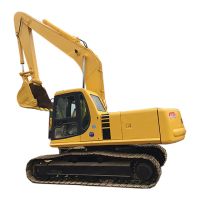
